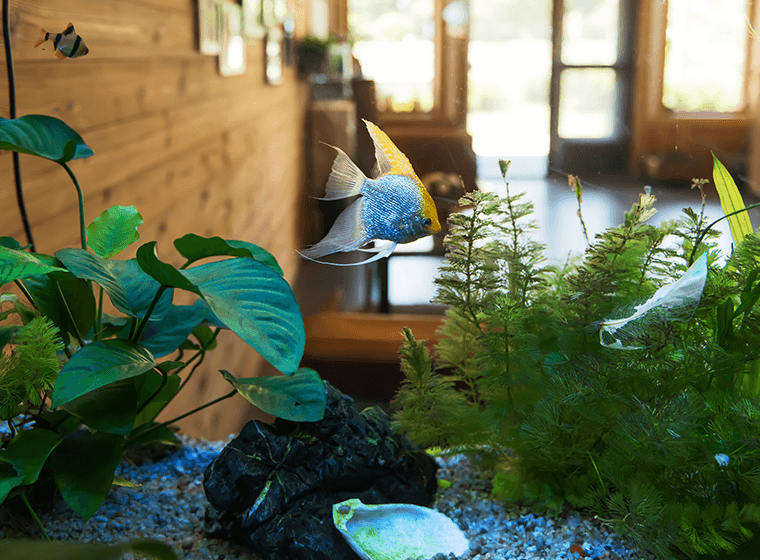How to Move a Fish Tank in 8 Steps

Moving a fish tank can be tricky. You can’t just unplug everything and move it in one go. With some careful planning, you can make the process much easier on yourself, and make sure your fish stay happy during the move.
How to Move a Fish Tank Safely
With so many steps in the process, it can seem a bit overwhelming. It’s often helpful to break them down into 3 stages: before, during, and after the move.
Preparation Before the Move

Step 1: Gather the essential supplies
Before you get started, make sure you have all the supplies you’ll need. If you take the time to get them organized at the beginning, you won’t have to worry about scrambling to find things when you’re in the middle of a move. Here’s what you’ll need:
- A fishnet
- Large (5 gallon) buckets (make sure these are new or very well cleaned)
- Siphon hose
- Plastic baggies
- Duct tape
- Bubble wrap
- Insulating foam sheets
- Packing paper
- Moving boxes
Step 2: Get your fish ready to move
It’s a good idea to stop feeding your fish 24-48 hours before moving day so you can be sure all their waste has passed before you move them. (Don’t worry—fish can survive for up to a week without food, so they’ll be fine!)
If you have smaller fish and your move is under an hour away, you can put them into plastic baggies along with water from the tank. Keep them safe for travel by placing them in a sturdy case or a cooler.
For longer moves or larger fish, transport them in large buckets. Make sure the buckets are clean and haven’t been used to store any harsh chemicals. Fill the buckets with water from the tank and then add in your fish, with 3-4 fish per bucket. Tape the list shut to prevent any spills during the move.
Step 3: Clean the tank

To prep the tank, unplug everything, then carefully remove all the plants and accessories. Pack the plants in a bucket with water from the tank. For the decor and accessories, clean and dry them, then carefully pack them with bubble wrap and paper. Carefully remove and pack up all the equipment, including the light, pump, and heater. Ideally, the filter should be kept damp and packed in a sealed container.
Step 4: Drain the water

For this step, it’s easiest to use a siphon hose, especially if you have a larger tank. It’s best to try and save as much of the water as you can to refill the tank once you’re at your new place. It’s much easier on the fish and minimizes health risks. Transport the water in large 5 gallon buckets and seal the lid with tape before you move them.
Step 5: Pack the aquarium
Remove the lid and pack this separately, wrapped in bubble wrap. It’s best to pack your tank in a box, if you can find one large enough. Place the tank in the box, use insulating foam to fill in any gaps around the tank to prevent it from shifting around. Stuff the tank with paper or foam to make sure it doesn’t get scratched up.
During the Move
Step 6: Moving the tank
It’s always best if you can transport the tank and fish in your own vehicle, just to keep them extra safe. If you can’t fit the tank in your car, make sure your movers know that your tank is very fragile and they should use extra care when loading it.
After the Move
Step 7: Set up the tank
Once you’re at your new home, start setting it up right away. If it was a short move, you can use the treated water you transported with you to fill the tank and get it moving through the filtration system again. You’ll want to make sure the temperature, PH balance, chlorine level, and ammonia level are back to normal before you add your fish back in. This shouldn’t take long for short moves, but for longer moves you’ll need to set your tank up from scratch and it could take some time for everything to regulate.
Step 8: Add your fish back in

Once the water conditions are back to normal, you can add your fish back in. Carefully scoop them out of the bucket with the net and place them in the water. If you used baggies to move your fish, you should place the bags in the water for a bit at first to let the fish get used to the temperature, and then release them into the tank.

